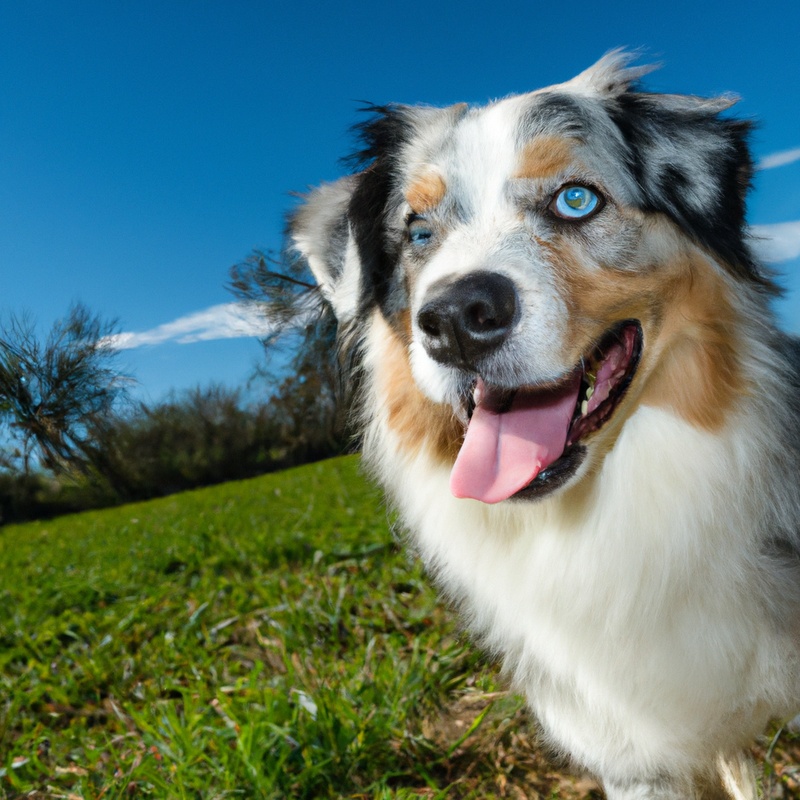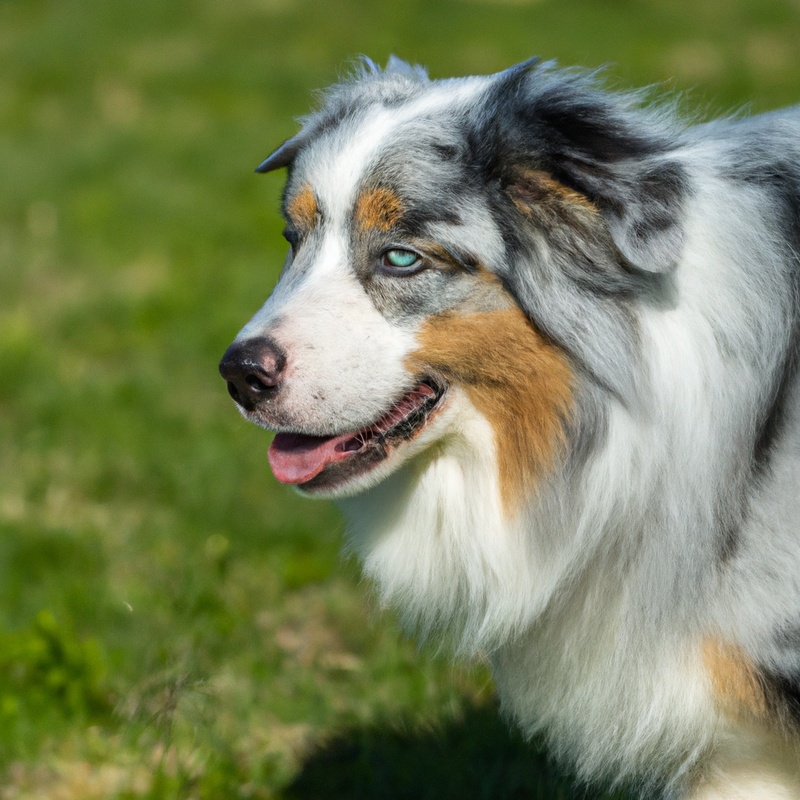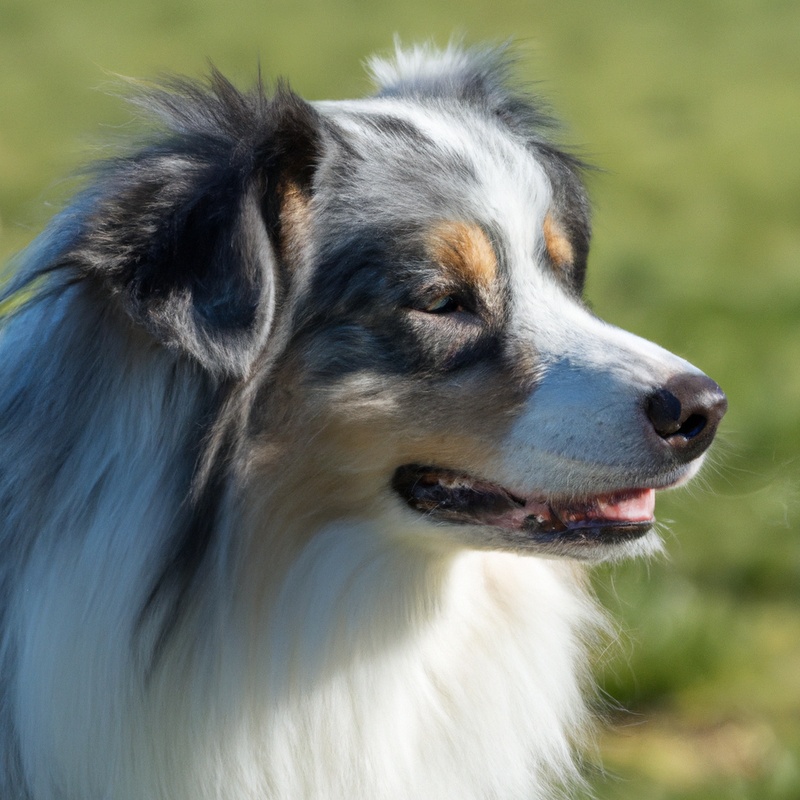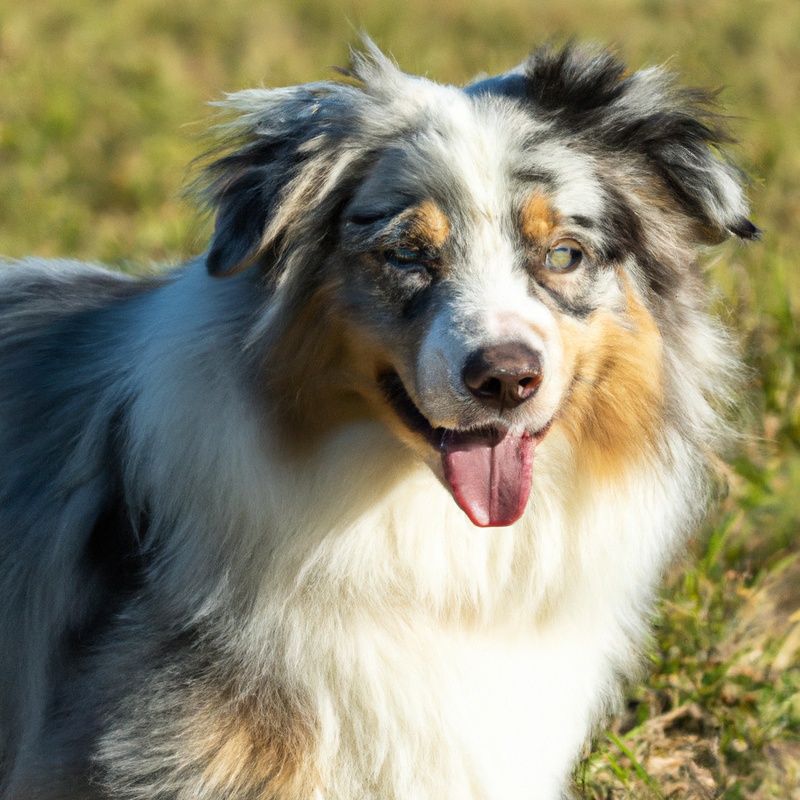What Are The Exercise Needs Of An Australian Shepherd In a Rural Home With Acreage?
Key Takeaways:
- Australian Shepherds in rural homes with acreage need extensive daily exercise to meet their high energy levels.
- Providing mental stimulation through activities like obedience training and puzzle toys is crucial for Australian Shepherds in rural environments.
- Engaging in activities like herding, agility training, and long walks, can help Australian Shepherds satisfy their exercise needs.
- Supervised playtime with other dogs or interactive games can be beneficial in preventing boredom and promoting physical fitness for Australian Shepherds in rural homes with acreage.
Have you ever wondered how much exercise an Australian Shepherd needs when living in a rural home with acres of land? Well, the truth is, these incredible dogs have a unique set of exercise requirements.
As a proud owner of an Australian Shepherd myself, I know firsthand the energy and intelligence they possess.
In this article, I will delve into the exercise needs of Australian Shepherds and provide you with valuable insights and tips on how to keep them happy and healthy in a rural setting. So, let’s get started and explore the world of exercise for our beloved Aussies!
| Exercise Needs | Description |
|---|---|
| High exercise needs | An Australian Shepherd in a rural home with acreage requires a high level of exercise to fulfill its physical and mental stimulation needs. This breed is known for its high energy levels and requires ample opportunities to burn off excess energy. |
| Daily exercise | They should receive at least 1-2 hours of exercise per day. Activities such as running, walking, playing fetch, or participating in agility training can help keep them stimulated and prevent behavioral issues. |
| Structured activities | Structured activities that provide mental challenges, such as obedience training, puzzle toys, and interactive games, are also important for this breed. Mental stimulation helps prevent boredom and keeps them engaged. |
| Off-leash play | Given their herding instincts, Australian Shepherds should only be allowed off-leash in a secure, fenced area to avoid chasing or herding behaviors that could potentially endanger themselves or others. |
| Avoid overexertion | While they have high exercise needs, it’s important not to overexert an Australian Shepherd, especially in hot weather. Provide ample water breaks and avoid intense exercise during the hottest times of the day to prevent heatstroke. |
Understanding the exercise requirements of an Australian Shepherd
Australian Shepherds: A highly energetic and intelligent breed
Australian Shepherds are well-known for their exceptional energy levels and intelligence. They have a natural drive to stay active and engage in various activities.
This breed requires regular mental and physical stimulation to prevent boredom and behavioral issues.
Their high intelligence makes them quick learners and highly trainable, which means they thrive on challenges and enjoy learning new tricks or participating in dog sports. Australian Shepherds are not suitable for sedentary lifestyles and require an owner who can provide them with plenty of exercise and mental stimulation.
The importance of exercise for Australian Shepherds
Exercise is incredibly important for Australian Shepherds. As a highly energetic and intelligent breed, they require regular physical activity to stay happy and healthy.
Exercise helps them burn off excess energy, maintain a healthy weight, and prevent behavioral issues that may arise from boredom or pent-up energy.
Regular exercise is essential for Australian Shepherds to prevent them from becoming destructive or anxious. Without enough physical activity, they may resort to chewing furniture, digging holes, or engaging in other undesirable behaviors.
Exercise also helps to keep their minds stimulated, which is crucial for this intelligent breed.
Exercise doesn’t just benefit Australian Shepherds physically and mentally; it also strengthens the bond between you and your furry friend. Engaging in activities together builds trust and reinforces obedience training.
It’s a great way to have fun and spend quality time with your Australian Shepherd.
The type and amount of exercise needed can vary depending on the individual dog. Australian Shepherds generally require at least 60 minutes of vigorous exercise each day.
This can include activities such as brisk walks, jogs, hikes, or interactive play sessions like fetch or frisbee.
In addition to physical exercise, mental stimulation is equally important for Australian Shepherds. Incorporate puzzle toys, obedience training, and interactive games to keep their minds engaged.
This will prevent boredom and help prevent destructive behaviors.
Remember to consult with your veterinarian to ensure you’re providing the right amount and type of exercise for your Australian Shepherd, taking into account their age, health, and any specific needs or limitations they may have. Regular exercise, both physical and mental, is key to keeping your Australian Shepherd happy, healthy, and well-behaved.
Factors to consider in a rural home with acreage
Evaluating the available space
When evaluating the available space for an Australian Shepherd in a rural home with acreage, it’s important to consider the size and layout of the area. Assess the amount of open space the dog will have to roam and explore.
Take into account any fencing or boundaries that may restrict their movements.
Consider whether the space is flat or hilly, as this can impact the type and intensity of exercise they can engage in. Additionally, evaluate if there are any natural features or obstacles, like streams or trees, that can be utilized for exercise.
A thorough assessment of the available space will help ensure that your Australian Shepherd has enough room to thrive and stay active.
Variety of terrain and its impact on exercise
The variety of terrain in a rural home with acreage can have a significant impact on the exercise needs of an Australian Shepherd. Different types of terrain provide different levels of physical exertion and mental stimulation for your furry friend.
For example, hilly or uneven terrain can challenge their muscles and increase their endurance, while flat or even terrain may not provide as much of a workout.
By allowing your Australian Shepherd to explore and exercise on varied terrain, you can help them develop their coordination and balance. This can also help prevent boredom and keep them mentally engaged during their exercise sessions.
Plus, the uneven surfaces can provide natural obstacles and challenges for your dog to overcome, which can be mentally stimulating for them.
When it comes to exercise on different terrains, it’s important to keep an eye on your Australian Shepherd and adjust the intensity and duration of their exercise accordingly. Steep or rugged terrain may require shorter and less intense exercise sessions, especially if your dog is not accustomed to it.
On the other hand, if you have flat and open areas, you may need to add more activities or exercises to ensure your Australian Shepherd is getting enough physical and mental stimulation.
Remember to always prioritize your dog’s safety and well-being when considering their exercise needs on different terrains. It’s best to gradually introduce them to new types of terrain and monitor their response to ensure they are not overexerting themselves or risking injury.

Utilizing natural features for exercise
In a rural home with acreage, you have the perfect opportunity to utilize natural features for exercise with your Australian Shepherd. These natural features can provide a variety of terrain and enrichment for your dog’s physical and mental well-being.
One way to utilize natural features is by going on hikes or walks on different trails or paths around your property.
This allows your Australian Shepherd to explore new surroundings and engage their senses. You can also incorporate hills or inclines in your walks to provide an extra challenge for their muscles and cardiovascular system.
If you have a pond, lake, or river on your property, you can introduce your Australian Shepherd to water activities.
Swimming is an excellent low-impact exercise that can help strengthen their muscles and joints. It’s important to supervise your dog during water activities to ensure their safety.
Another natural feature you can utilize is an open field or meadow.
This provides ample space for your Australian Shepherd to run and play fetch. You can also set up an agility course with objects like logs, tunnels, and jumps.
These activities will help keep your dog physically active and mentally stimulated.
Don’t forget about the power of using natural obstacles like fallen trees, rocks, or hills as part of your Australian Shepherd’s exercise routine. These natural elements can be incorporated into agility exercises, creating a fun and challenging workout for your dog.
Overall, utilizing the natural features of your rural home with acreage is a great way to provide exercise and mental stimulation for your Australian Shepherd.
It allows them to engage with their surroundings and harness their natural instincts. Just remember to always consider your dog’s safety and monitor their behaviors during exercise.

Recommended exercises for Australian Shepherds in a rural home
Daily walks and hikes
Daily walks and hikes are essential for Australian Shepherds in a rural home with acreage. These activities provide the necessary physical exercise and mental stimulation that this energetic breed requires.
Taking your Australian Shepherd for a daily walk allows them to release their pent-up energy and helps prevent behavioral problems.
Hiking on varied terrains, such as hills or wooded trails, can further challenge their agility and provide a new sensory experience. Both walks and hikes allow your Australian Shepherd to explore their natural surroundings and fulfill their herding instincts.
It is important to adjust the duration and intensity of these activities based on your dog’s age, fitness level, and any health issues they may have.
So, lace up your shoes and enjoy the outdoors with your Australian Shepherd!
Interactive play sessions and agility training
Interactive play sessions and agility training are essential for Australian Shepherds in a rural home with acreage. These activities not only provide physical exercise but also stimulate their highly intelligent minds.
During play sessions, I like to engage my Aussie in games like fetch, frisbee, and hide-and-seek to keep them mentally and physically stimulated.
Agility training is also beneficial for Australian Shepherds as it allows them to utilize their natural agility and problem-solving skills. I set up obstacle courses using objects like cones, tunnels, and jumps to create a challenging and fun training environment.
This helps improve their coordination, focus, and overall fitness.
Remember to start slowly and gradually increase the difficulty level as your Aussie becomes more skilled. Consistency is key, so make sure to incorporate interactive play sessions and agility training into your daily routine.
By doing so, you’ll not only meet their exercise needs but also strengthen the bond between you and your furry friend.

Herding activities and obedience training
Herding activities and obedience training are both excellent forms of exercise for Australian Shepherds. This breed has a strong herding instinct and loves to have a job to do.
Engaging them in herding activities, such as working with livestock or participating in herding trials, allows them to fulfill their natural instincts while also providing physical and mental stimulation.
Obedience training is also essential for Australian Shepherds as it helps to establish boundaries, improve their behavior, and build a strong bond between the owner and the dog. Training sessions should be consistent, positive, and reward-based.
It is important to remember that Australian Shepherds are intelligent dogs, so providing mental challenges and tasks during their exercise routine is also beneficial.
Creating a routine and schedule for exercise
Benefits of a consistent exercise routine
A consistent exercise routine for your Australian Shepherd has numerous benefits. First, regular exercise helps maintain a healthy weight and prevents obesity, which can lead to various health problems.
Second, exercise strengthens your dog’s muscles, bones, and joints, promoting overall physical fitness.
Additionally, consistent exercise improves cardiovascular health and reduces the risk of heart disease. Exercise also plays a crucial role in mental stimulation for Australian Shepherds.
It helps relieve boredom and prevents destructive behaviors that can occur when your dog is understimulated.
Regular physical activity keeps their minds engaged, reduces anxiety, and enhances their overall well-being. Moreover, a consistent exercise routine provides an outlet for your dog’s energy.
Australian Shepherds are highly energetic breeds that require ample exercise to prevent restlessness and hyperactivity.
Regular exercise helps channel their energy in a positive way and promotes a calm and well-behaved temperament. Furthermore, exercising with your Australian Shepherd strengthens the bond between you and your pet.
It allows you both to spend quality time together and creates opportunities for positive reinforcement and training.
Your dog will learn to trust and rely on you as their companion and leader.
Setting realistic goals and expectations
Setting realistic goals and expectations is essential when it comes to exercising an Australian Shepherd in a rural home with acreage. It’s important to understand that Australian Shepherds are highly energetic and intelligent dogs, which means they require a significant amount of exercise to keep them physically and mentally stimulated.
When setting goals, it’s crucial to take into account the breed’s exercise needs and your own lifestyle.
Start by assessing the available space and terrain in your rural home. Evaluate whether you have enough room for your Australian Shepherd to run and explore.
Also, consider incorporating natural features like hills or fields to provide additional exercise opportunities.
Keep in mind that daily walks and hikes are recommended for Australian Shepherds. These activities not only provide physical exercise but also allow your dog to explore their surroundings and satisfy their curious nature.
Interactive play sessions and agility training can further engage their intelligent minds and help them expend energy.
Additionally, herding activities and obedience training can be both physically and mentally challenging for them. Setting realistic expectations also means understanding the need for mental stimulation.
Australian Shepherds thrive on mental challenges, so incorporate puzzle toys, obedience training, and interactive games into their exercise routine.
This will help keep their minds sharp and prevent boredom. Remember, it’s important to consult with a veterinarian to monitor your Australian Shepherd’s health and ensure they are getting the appropriate amount of exercise.
Taking into consideration their age, health conditions, and any specific needs they may have will help you create a well-rounded exercise plan that is suitable for them.
By setting realistic goals and expectations, you’ll be able to provide your Australian Shepherd with the exercise they need while taking into account their specific requirements and your own capabilities. This will contribute to their overall well-being and ensure they lead a happy and fulfilled life in their rural home with acreage.
Incorporating mental stimulation in the exercise routine
Australian Shepherds are not only highly energetic, but they are also extremely intelligent. To ensure their overall well-being, it is important to incorporate mental stimulation in their exercise routine.
This helps to prevent boredom and keeps their minds sharp.
One way to do this is by including interactive toys or puzzle games during play sessions. These toys require the dog to problem solve and use their cognitive skills in order to receive a reward.
This not only provides mental stimulation, but it also engages their natural instincts.
Another option is to incorporate obedience training or agility exercises into their routine. This not only helps to burn off physical energy but also requires the dog to listen, follow commands, and think through different obstacles.
It provides mental stimulation while allowing them to practice their obedience skills.
Additionally, you can introduce new environments and experiences during your walks or hikes. Let them explore different areas, encounter new smells, and encounter new challenges.
This helps to keep their minds engaged and stimulated as they navigate through unfamiliar surroundings.
Remember, mental stimulation is just as important as physical exercise for Australian Shepherds. By incorporating various activities that challenge their minds, you can ensure that they are not only physically fit but mentally satisfied as well.
Additional considerations for exercise needs
Socialization and playdates with other dogs
Socializing your Australian Shepherd and arranging playdates with other dogs is essential for their overall well-being and development. It helps them build social skills, learn appropriate behaviors, and prevent behavioral issues.
I recommend introducing your Aussie to various dogs of different sizes, ages, and temperaments.
This will expose them to different play styles and teach them how to interact politely. Arrange playdates with friends, family, or neighbors who have well-behaved and vaccinated dogs.
Choose a neutral and secure location, such as a fenced yard or a nearby park, for the playdates.
Observe the dogs’ interactions closely and ensure they are playing nicely. Encourage positive behaviors, like sharing toys and taking turns.
If any issues arise, intervene calmly and redirect their attention to something else.
It’s important to supervise the playdates to ensure everyone’s safety. Watch for signs of discomfort, aggression, or fatigue, and give the dogs breaks when needed.
Always prioritize the well-being of your Aussie and the other dogs involved.
Consistent socialization and playdates will help your Australian Shepherd become a well-rounded, confident, and friendly companion.
Weather conditions and adapting exercise
Weather conditions play a significant role in adapting exercise for Australian Shepherds in a rural home. I suggest considering the temperature, humidity, and precipitation when planning their physical activities.
During hot weather, it’s essential to exercise them in the cooler parts of the day and provide plenty of water breaks.
In colder conditions, make sure they have appropriate clothing to stay warm. Adjusting exercise routines based on weather conditions will help ensure the safety and well-being of your Australian Shepherd.
Keep an eye on the forecast and be flexible with your plans to accommodate the changing weather.
Monitoring health and consulting with a veterinarian
When it comes to keeping your Australian Shepherd healthy, monitoring their health and consulting with a veterinarian are essential. Regularly observing your dog for any signs of illness or discomfort is crucial in catching any potential health issues early.
Look out for changes in appetite, energy levels, coat condition, and bathroom habits.
If you notice anything concerning, it’s important to consult with a veterinarian promptly. Regular check-ups and vaccinations are also vital to ensure your dog’s overall well-being.
Your veterinarian can provide personalized advice on exercise, nutrition, and any specific health concerns for your Australian Shepherd.
Remember, your vet is your trusted partner in keeping your furry friend healthy and happy.
Balancing exercise and companionship for Australian Shepherds
Understanding the breed’s need for human interaction
Australian Shepherds have a strong need for human interaction. They are a highly sociable breed that thrives on companionship and engagement with their owners.
Spending quality time with their human family members is essential for their overall well-being and happiness.
These dogs are known for their loyalty and eagerness to please, and they truly enjoy being a part of family activities. For an Australian Shepherd, human interaction goes beyond just physical exercise.
They crave mental stimulation and enjoy participating in various activities with their owners, such as training sessions, puzzle games, and interactive playtime.
Regular interaction and bonding with their human companions help prevent behavioral issues and strengthens the bond between the dog and its owner. Leaving an Australian Shepherd alone for long periods can lead to boredom and anxiety, which may result in destructive behaviors.
These dogs are happiest when they are with their family and actively involved in their daily lives.
To meet their need for human interaction, make sure to spend quality time with your Australian Shepherd every day. This can include activities like training exercises, playing fetch, or even just relaxing together.
Incorporating your dog into your daily routines and tasks, such as going for walks together or having them by your side while you work in the yard, can also fulfill their need for companionship.
Remember, Australian Shepherds are a breed that thrives on human interaction and companionship, so make an effort to provide them with the attention and engagement they need to be happy and fulfilled.
Combining exercise and quality time together
Combining exercise and quality time together is essential for Australian Shepherds. One great way to achieve this is by engaging in activities that are both physically and mentally stimulating.
For example, you can go for long walks or hikes in the countryside, allowing your dog to explore new scents and environments while enjoying the fresh air and exercise.
You can also incorporate interactive play sessions, such as playing fetch or engaging in agility training. These activities not only provide exercise but also promote bonding between you and your dog.
Additionally, teaching your Australian Shepherd new tricks and commands through obedience training can be a fun and rewarding way to spend quality time together while providing mental stimulation.
Another option is to involve your dog in herding activities. Australian Shepherds have a natural herding instinct, and participating in herding trials or training sessions can be a fulfilling experience for both of you.
It helps them fulfill their innate need and provides a stimulating mental and physical challenge.
Remember to prioritize both physical and mental exercise, as they go hand in hand for the overall well-being and happiness of your Australian Shepherd. By finding activities that combine exercise and quality time together, you can strengthen your bond while keeping your dog happy and healthy.
Alternatives to exercise for mental stimulation
Mental stimulation is just as important for Australian Shepherds as physical exercise. Here are some alternatives to exercise that can help keep your Australian Shepherd’s mind engaged.
- Puzzle toys: These interactive toys are designed to challenge your dog’s problem-solving skills. They often involve hiding treats or toys inside compartments that your dog has to figure out how to open. This can provide mental stimulation and keep them entertained for hours.
- Nose work: Australian Shepherds have a great sense of smell, and engaging their noses in an activity can be mentally stimulating. You can hide treats or toys around the house or yard and encourage your dog to sniff them out. You can also try scent work classes or competitions for a more structured approach.
- Training sessions: Australian Shepherds are highly intelligent and enjoy learning new things. Short training sessions can provide mental stimulation and strengthen the bond between you and your dog. Teach them new tricks, obedience commands, or even some basic agility skills.
- Food puzzles: Instead of feeding your Australian Shepherd from a regular bowl, you can use food puzzles or treat-dispensing toys. These toys make your dog work for their food by requiring them to manipulate puzzles or solve problems to get their meal. This can be a great way to stimulate their brains while also satisfying their hunger.
- Interactive games: Engage your Australian Shepherd in interactive games that challenge their mental abilities. Games like “find it” or “hide and seek” can be a fun way to provide mental stimulation. You can hide treats or toys around the house and encourage your dog to search for them using their sense of smell.
Remember, mental stimulation is just as important as physical exercise for Australian Shepherds. By incorporating these alternatives to exercise, you can keep your dog’s mind engaged and prevent boredom.
Final Verdict
I firmly believe that understanding the exercise needs of an Australian Shepherd in a rural home with acreage is vital for their overall well-being. These highly energetic and intelligent dogs require ample physical activity to stay happy and healthy.
Evaluating the available space, utilizing natural features, and incorporating a variety of exercises such as walks, play sessions, herding activities, and agility training are essential.
Creating a consistent routine, setting realistic goals, and incorporating mental stimulation are crucial for a balanced exercise regimen. Additionally, considering socialization, weather conditions, and monitoring their health are important factors.
By striking a balance between exercise and companionship, Australian Shepherds in a rural home can experience a fulfilling and enriched lifestyle.








